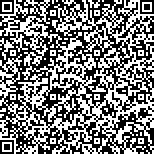| 本文已被:浏览 59次 下载 33次 |

码上扫一扫! |
|
|
| 小胶质细胞对缺血性卒中的双重调控及中药对其调节作用的研究进展 |
|
彭真1, 张晗1,2, 李新悦1, 马耀磊1, 韦明艳1, 李霖1,2, 李楠1,2,3
|
|
1.天津中医药大学中医药研究院, 天津 301617;2.天津中医药大学, 组分中药国家重点实验室, 天津 301617;3.天津中医药大学, 现代中药发现与制剂技术教育部工程研究中心, 天津 301617
|
|
| 摘要: |
| 缺血性卒中是一种常见的脑血管疾病,通常是由于脑血液供应障碍引起脑组织氧供不足或缺血性坏死,严重影响患者健康,并给社会经济带来沉重负担。脑组织缺血性坏死会引发各种神经功能障碍,想要恢复绝非易事。近年来,通过调节免疫建立有利于缺血性卒中组织修复的免疫环境已成为目前研究热点。小胶质细胞是广泛分布在中枢神经系统(CNS)的先天免疫细胞,能对缺血性卒中后组织损伤的脑内微环境进行动态监控,并被分别激活为经典激活型(M1表型)和替代激活型(M2表型)两种状态,在缺血性卒中的神经修复中是一把双刃剑。M1和M2表型的小胶质细胞分别呈现促炎以及抗炎的特性,促进小胶质细胞从M1转化为M2极化表型有助于抑制神经炎症,是治疗缺血性卒中的重要干预策略。因此文章总结了小胶质细胞在缺血性卒中后的M1/M2表型转换的潜在机制,以及中药对极化过程的调节,为发现和探索潜在的免疫疗法提供新思路。 |
| 关键词: 小胶质细胞 缺血性卒中 M1/M2表型 中药 |
| DOI:10.11656/j.issn.1673-9043.2024.09.08 |
| 分类号:R743 |
| 基金项目:湖北省重点研发计划项目(2021ACA004-03,2022 ACA003-02-002)。 |
|
| Recent advances in the dual regulation of microglia in ischemic stroke and the modulatory role of traditional Chinese medicine |
|
PENG Zhen1, ZHANG Han1,2, LI Xinyue1, MA Yaolei1, WEI Mingyan1, LI Lin1,2, LI Nan1,2,3
|
|
1.Institute of Chinese Medicine, Tianjin University of Chinese Medicine, Tianjin 301617, China;2.State Key Laboratory of Component-based Chinese Medicine, Tianjin University of traditional Chinese medicine, Tianjin 301617, China;3.Engineering Research Center of Modern Chinese Medicine Discovery and Preparation Technique, Ministry of Education, Tianjin University of Traditional Chinese Medicine, Tianjin 301617, China
|
| Abstract: |
| Ischemic stroke is a common cerebrovascular disease,usually caused by cerebral blood supply disorders leading to insufficient oxygen supply or ischemic necrosis of brain tissue,which seriously affects patient health and brings a heavy burden to the social economy. Ischemic necrosis of brain tissue can cause various neurological disorders,and recovery is not an easy task. In recent years,establishing an immune environment conducive to ischemic stroke tissue repair by regulating immunity has become a current research hotspot. Microglia are innate immune cells widely distributed in the central nervous system(Central Nervous System,CNS),capable of dynamically monitoring the brain microenvironment of tissue damage after ischemic stroke,and are activated into two states:classical activation(M1 phenotype) and alternative activation(M2 phenotype). They are a double-edged sword in the neural repair of ischemic stroke. The M1 and M2 phenotypes of microglia exhibit pro-inflammatory and anti-inflammatory properties,respectively. Promoting the polarization phenotype of microglia from M1 to M2 helps to suppress neuroinflammation and is an important intervention strategy for treating ischemic stroke. Therefore,this article summarizes the potential mechanisms of M1/M2 phenotype transformation of microglia after ischemic stroke,as well as the regulation of polarization process by traditional Chinese medicine,providing new ideas for discovering and exploring potential immunotherapies. |
| Key words: microglia ischemic stroke M1/M2 phenotype traditional Chinese medicine |
